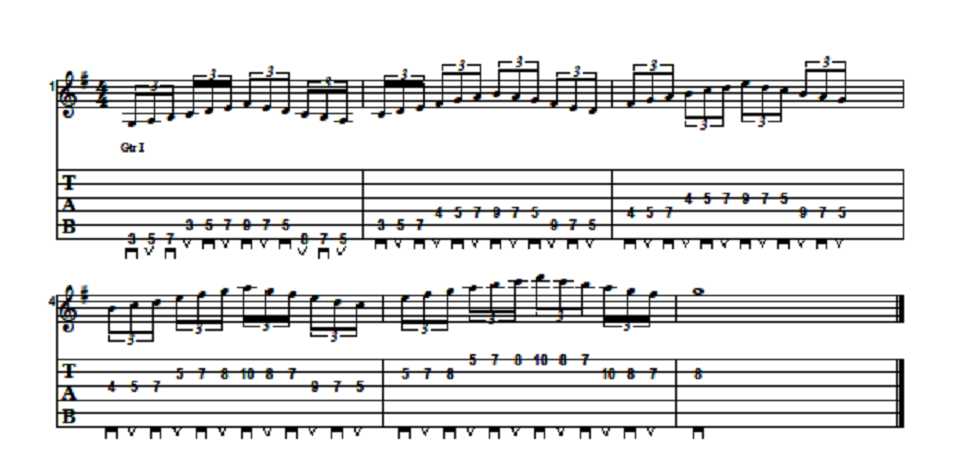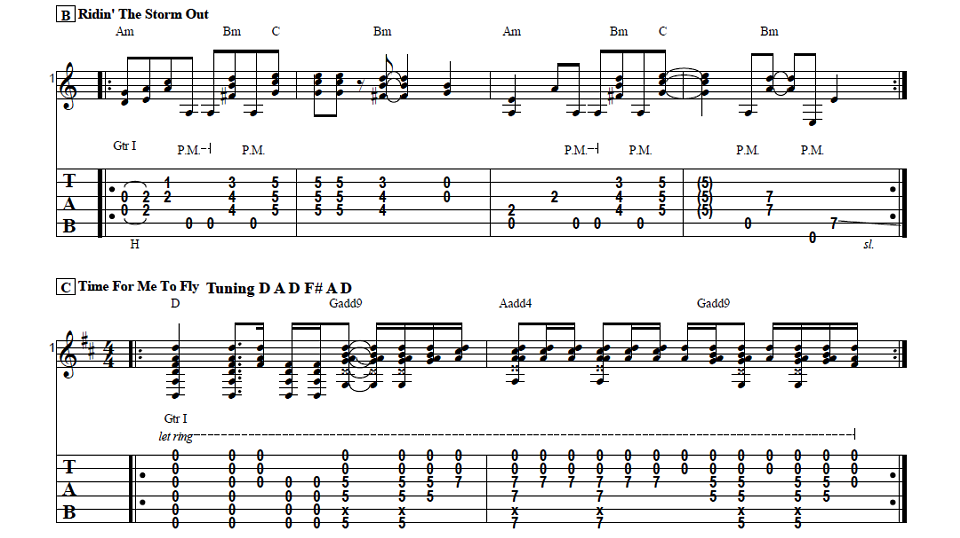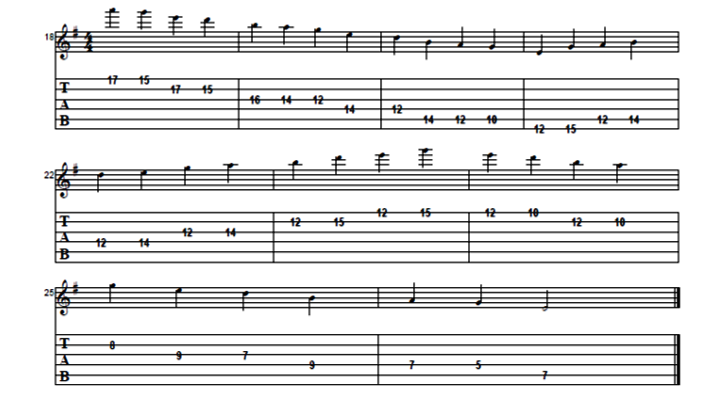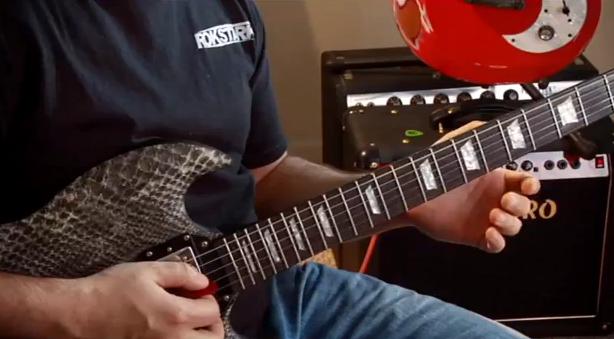Check out this Diatonic Exercise To Quickly Rule The Neck from Guitar Control instructor Darrin Goodman. Be sure to get the tabs to go along with this killer-free lesson.

Introduction
How’s it going? This is Darrin with GuitarControl.com bringing you this video lesson and today I want to show you a cool exercise for chaining the positions of the major scale together and it’s just a good all-around picking exercise and an exercise for your fretting hand for shifting back and forth between the positions. So be sure to click on the link in the description for the tabs and let’s get close up and take a look at this.
Diatonic Scales
All right, so the first thing here let’s just go over these two scale patterns just in case you don’t know them. So these patterns that I’m using are three notes per string. I like using the three note per string scales because it just makes it easier for alternate picking and for hooking the patterns together and this is completely movable. So we’re doing this in the key of G major, but you can move this around to whatever key you want.
Ionian
So I’m starting here on the third fret of the low E because that’s G. So we’re starting on G and we’ve got three, five, seven and then on the A string three, five, seven, the D string we have four, five, seven, the G string, four, five, seven, the B string, five, seven, eight and the high E, five, seven and eight; so that’s our G major scale, G Ionian.
Dorian
So how these hook together is there’s three notes per string and notes two and three are notes one and two of the next position. So the next position is going to start on the fifth fret, this is our Dorian shape. So now we’ve got five, seven, eight and then on the A string we have five, seven, nine, D string five, seven, nine, G string five, seven, nine, B string seven, eight, ten, and high E seven, eight and ten.
The Exercise
All right, so for this little sequence what we’re going to do is we’re going to play the first six notes of Ionian and now we’re going to shift up to the next position. So right now we just left off we’re on the third, fifth, and seventh fret. So we’re going to move up to the next position which will put us at the fifth, seventh and ninth fret, and then we’re gonna descend the Dorian shape, so nine, seven, five, and then to the low E, eight, seven and five. So that’s basically the entire sequence and then all we do is just move on to the next string. We’re starting on the A string and we’ll do the same sequence based on the A and the D strings. So now for the A string, we start on the third fret, three, five, seven and then to the D string, four, five, and seven. Now again these two notes here at the fifth and the seventh are notes one and two of the next position, so now we’re just going to shift up nine, seven, five, and then on the eight on the D string and then to the A string, nine, seven and five. Now we’ll just start the sequence over again on the D string, four, five, seven, and then to the G string, four, five and seven. Now I shift up nine, seven and five on the G string and nine, seven and five on the D string. Now we start the sequence over again on our G string, so again we’ve got four, five, and seven and now when we go to the B string we have to shift up a half step and it’s five, seven, and eight.
Now we shift up to our next position, so again notes two and three here are notes one and two. So starting on the B string, ten, eight, and seven, and then we have to shift down a half step when we go to the third string, nine, seven, and five. Now we start the sequence over again on the second string, the B string, so we five, seven, and eight and then to the high E, five, seven, and eight. Now we shift up ten, eight, seven and go to the B string, ten, eight, seven and then end there on eight. Now the reason I end there on eight is that it’s our G, so it just makes it resolve.
Changing Keys
All right, so again like I said, this is movable. If you wanted to do this say in the key of A major, then we would start here on the fifth fret, so on and so forth like that, it’s movable, you can move it around to wherever it is that you would like it to be, whatever key you would like to play in. Now the entire thing is done with alternate picking, so I’m down, up, down, up, down, up, down, up, down, up, down, up and then we go starting on the fifth string it starts with a downstroke, so no two downs in a row no two ups in a row. All right, so like I said it’s pretty simple to play. If you don’t already know those scales you’re going to have to get them down first, so that adds a little bit of a challenge to it, but basically what I want you to get out of this is just the exercise and the way that it hooks together. So I did a lesson a while back that went over all seven of the modes and the patterns and stuff, so if you refer back to that you can not only learn the two scales that we used, here but the other five that go along with it and then you can do a larger arrangement of this exercise. So you could start off with G Ionian and then A Dorian and then shift up to B Phrygian and then up from there to Lydian and so on.
I’ll put a link for that lesson right here so you can go check that out and learn the other patterns and then you could expand on this whole idea.
Conclusion
All right, so that is all I’ve got for you today. I hope that you enjoyed that you got something out of it. If you like the lesson be sure to give it a thumbs up. Subscribe to the channel and hit that notification bell so you don’t miss any of the content that we put up throughout the week. That is all I’ve got for you today.
Thanks for watching and have a great day.
If you really want to Dominate your Fretboard click here.




